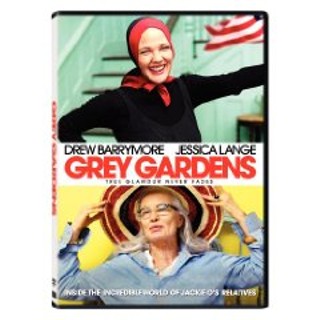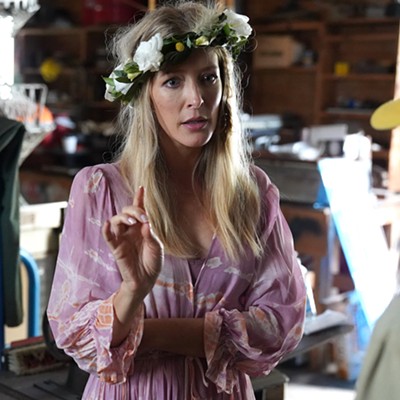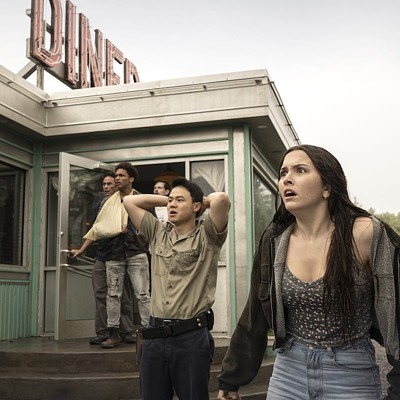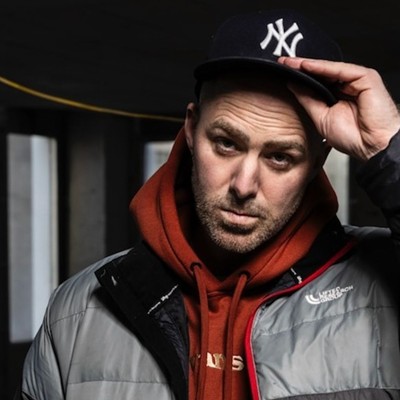It was only a matter of time before Albert and David Maysles' groundbreaking, cultish 1975 documentary Grey Gardens was turned into a feature film. An uncomfortably intimate portrait of Edie Bouvier Beale and her daughter Little Edie, socialites living in unbelievable squalor, has already spawned a Broadway musical and endless fashion editorials, thanks to Little Edie's iconic head scarves and skirt-free living. Director Michael Sucsy's HBO movie of the week, shot around Toronto, gives some context to these tragic lives---within the limits of a MOW---before the raccoons and cats started using Grey Gardens mansion as a giant litterbox, and before Big Edie (a spot-on performance, even with old-lady prosthetics, by Jessica Lange) stopped wearing clothes and began eating boiled corn in bed. However, the biggest surprise is Drew Barrymore as Little Edie. A huge, volatile personality that could have easily been overplayed as a caricature, Barrymore, perhaps drawing on her own family's crushing legacy, pushes past the eccentricities to reveal an insecure, pained woman haunted by broken dreams. Also, points for finally casting Jeanne Tripplehorn as a young Jackie Onassis. As Little Edie would say, it's staunch. —Sue Carter Flinn
One Week
Directed by Michael McGowan (Mongrel)
When English teacher/frustrated novelist Ben (Joshua Jackson) learns he's suffering from stage-four cancer, he does what any self-respecting movie flake would: he buys a motorcycle, casts off his boring life and sets out for adventure---looking to "embrace randomness" and "searching for moments." On his road trip, he has the quintessential Canadian experience---or at least the kind you'd expect him to have in an unimaginative movie like One Week, full of Tim Hortons cups, indie music, the northern lights and magical aboriginal drum-beating. Ben learns important lessons about his life, and death; Campbell Scott provides omniscient, pretentious narration, so we can, too! —Lindsay McCarney
TV
Entourage: season six premiere
Really, is a review of Entourage's season-six premiere any different than a review of season two? Vince has sex, E is a tiny, whiny suck and Arie yells at Lloyd. However, when the emotionally stunted posse returns---Turtle is still in a committed relationship with Jamie-Lynn Sigler from The Sopranos, E is moving out and Vince learns how to drive---a newfound maturity threatens nature's purpose for the show. No one watches Entourage for character insight; it's all about decadence, ignorance and celebrity appearances. This season look for Autumn Reeser (Taylor from The OC), Zac Efron and Matt Damon.
—SCF
BOOKS
The Halifax Street Railway
Don Cunningham & Don Artz (Nimbus)
Originally coil-bound and self-published by the authors in 2000, this photo-heavy book shows how the growth of electricity's delivery and usage---the business of the grid---was entangled with public transit for almost 100 years of this city's history, from 1866 to 1949.
The authors offer more of an economic history than a social one. They detail how companies were created and consolidated, championing the financially connected people who always sat at the top calling the shots. (By comparison, local government fares poorly in the authors' view. In 1912, the city's "onerous regulations" kept a company from expanding in size and beyond the city's control. A meddlesome municipality? Sounds familiar.)
The two Dons also chart changes in streetcar models, lengths of track, schedules and passenger loads. Too often, they're descriptive and not analytical in their approach. For example, the authors only flick at social history, considering the impacts of the Halifax Explosion, the two world wars and VE Day riots on the system. But they don't get into the everyday social and economic factors that influenced ridership. Who could afford to use it? What communities were first and principally served? What neighbourhoods were underserved, ignored? How does the period covered in this book connect with the condition of public transit today?














